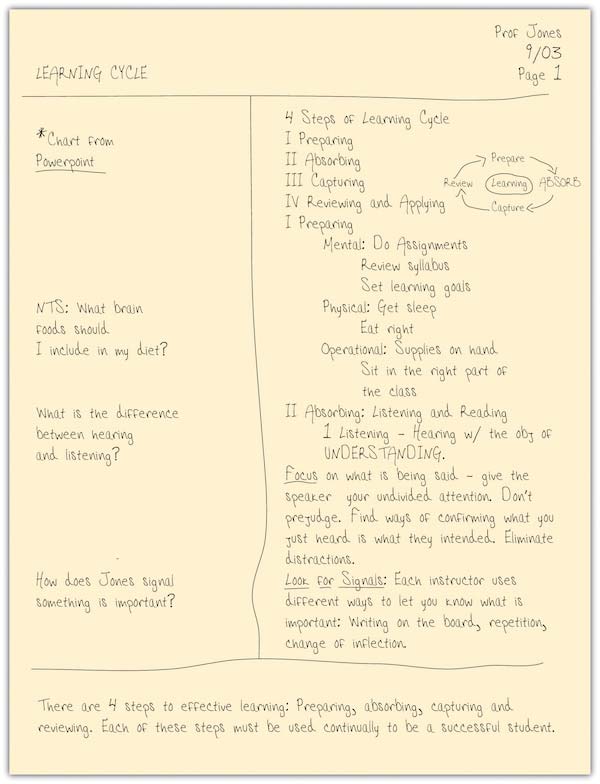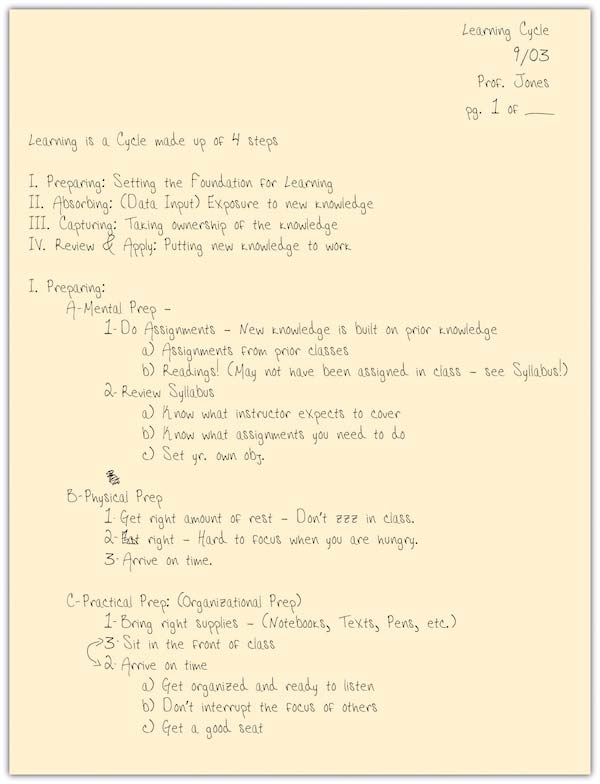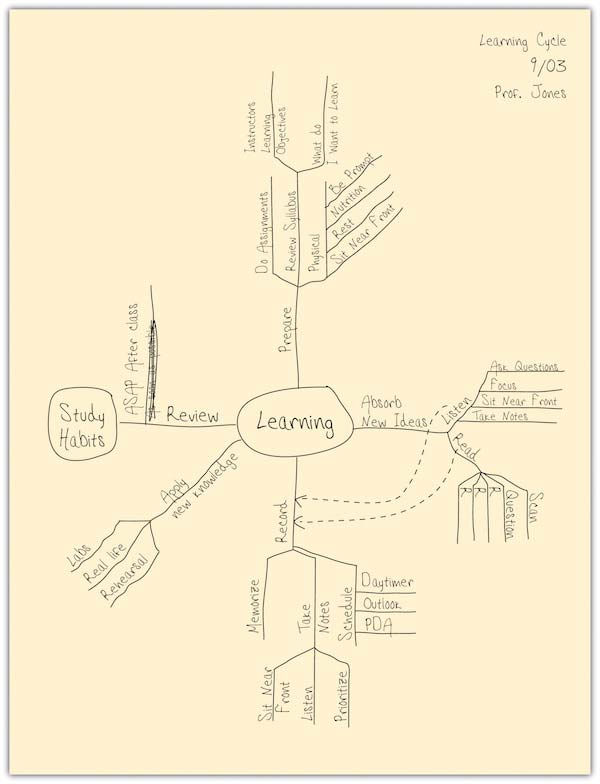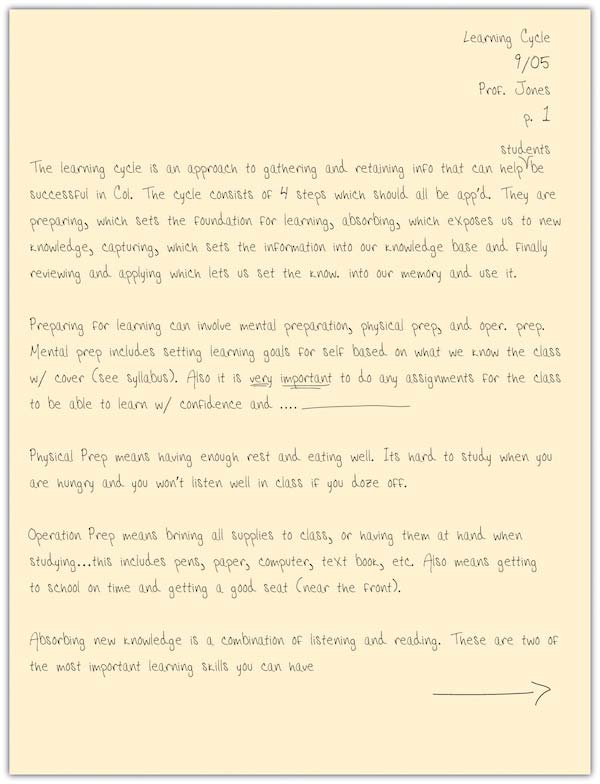Listening for signal phrases in class can help you catch the important information for taking notes. A signal phrase is a phrase, clause, or sentence that introduces a quotation, paraphrase, or summary. Examples include claim, note, observe, respond, say, think, and write.
There are several different methods you can use for taking notes, each with their own benefits. Read below for explanations and examples of how to take notes.
Cornell Method
This method helps you review and organize your notes so they are more useful when you study later.
How to Use the Cornell Method on Paper
- Write ID information (class name, date, topic) on the top of the page
- Divide the paper in two columns: a narrower column (⅓) on the left, and a wider column (⅔) on the right
- Take notes in the wider right column.
- After class, review your notes and use the narrower left column to write:
- Main ideas
- Key words
- Questions you have about the topic
- Clarification notes
- At the bottom of the page, write a summary of the class in your own words.
How to Use the Cornell Method on Index Cards
- Take notes on the lined side of the index card. Use one card per key concept.
- After class, review your notes and use the blank side of each index card to write:
- Main ideas
- Key words
- Questions you have about the topic
- Clarification notes
- Write a summary of the class on a separate card and plate it on the topic of the deck as an introduction to what was covered in the class.
- When you study later, use the cards as flashcards. Quiz yourself with the questions from one side, and check your answers on the other side.
Outline Method
This method helps you prioritize material into main points and supporting details. It is also a very organized way to take notes.
How to Use the Outline Method
- Before class, review the syllabus and any assigned reading so you have an idea of what the main ideas for today’s class will be about.
- Write main ideas on the left of the page
- Indent and add supporting ideas and details
- Indent and add more supporting details as needed
- Indent and add supporting ideas and details
- After class, review your notes and summarize the class in 1-2 short paragraphs. This will help you remember and prepare for the next class.
Concept Map Method
Concept maps are good for showing relationships and connections between ideas. This method can help you understand complex materials at a glance and move among ideas easily on your paper. However, some topics might not work very well with this method.
How to Use the Concept Map Method
- Look at your syllabus and rank the ideas you will listen to by level of detail (from high-level/abstract ideas to detailed facts).
- Write one high-level idea in the middle of your paper and draw a circle around it.
- Create branches off the circle to record more detailed information.
- Add additional branches for more details as you need them. Place related ideas in nearby branches.
- When a new high-level idea is presented, create a new circle with its own branches.
- Link together circles or concepts that are related.
- Use arrows and symbols to show relationships between ideas. (An arrow can show cause/effect, a double-pointed arrow can show dependence, a dotted line can show impact, etc.)
List Method
The list method is good for capturing a lot of information, BUT, this method doesn’t help you process information very well. You may want to take notes in class using the list method, then rewrite your notes into an outline or concept map after class as a way to review and better organize your notes.
How to Use the List Method
Write a list of ideas (short phrases or whole sentences) as they are presented.
References
Information and images from: “Listening, Taking Notes, and Remembering”, Chapter 4 from the book Success in College (v. 1.0), under a Creative Commons by-nc-sa 3.0 license.




